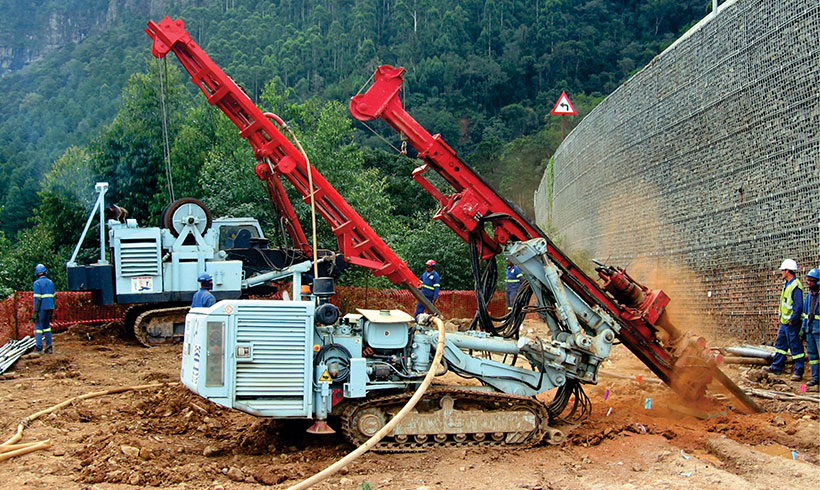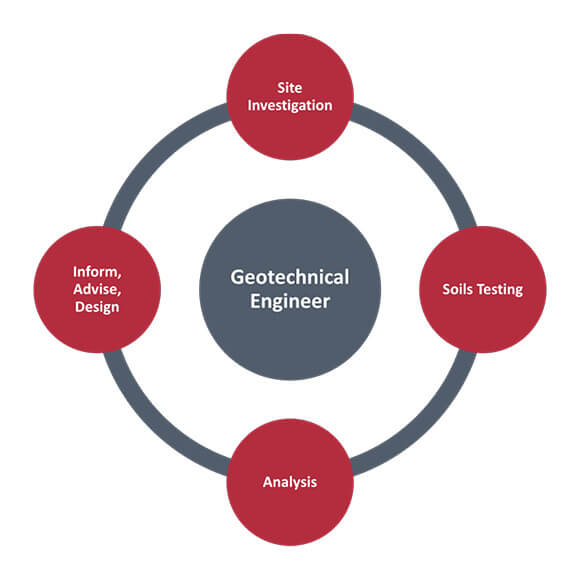Examine This Report about Specialized Geotechnical Engineering Solutions
Examine This Report about Specialized Geotechnical Engineering Solutions
Blog Article
Specialized Geotechnical Engineering Solutions Fundamentals Explained
Table of ContentsSpecialized Geotechnical Engineering Solutions for BeginnersThe 9-Second Trick For Specialized Geotechnical Engineering SolutionsAn Unbiased View of Specialized Geotechnical Engineering SolutionsExamine This Report about Specialized Geotechnical Engineering SolutionsSpecialized Geotechnical Engineering Solutions Things To Know Before You BuyThe 9-Second Trick For Specialized Geotechnical Engineering Solutions
William Rankine, an engineer and physicist, developed an alternative to Coulomb's earth pressure concept. Albert Atterberg established the clay consistency indices that are still made use of today for soil category. In 1885, Osborne Reynolds acknowledged that shearing causes volumetric extension of dense materials and tightening of loose granular products. Modern geotechnical design is claimed to have begun in 1925 with the publication of Erdbaumechanik by Karl von Terzaghi, a mechanical engineer and geologist. Terzaghi also created the framework for theories of bearing capacity of structures, and the theory for forecast of the price of negotiation of clay layers as a result of consolidation. Later on, Maurice Biot totally developed the three-dimensional dirt consolidation concept, expanding the one-dimensional model formerly developed by Terzaghi to a lot more general hypotheses and presenting the collection of basic equations of Poroelasticity.
Geotechnical designers explore and determine the residential properties of subsurface problems and products.
The Basic Principles Of Specialized Geotechnical Engineering Solutions
Geologic mapping and analysis of geomorphology are commonly finished in appointment with a geologist or design rock hound. Subsurface expedition generally entails in-situ screening (as an example, the basic penetration test and cone infiltration examination). The digging of test pits and trenching (especially for locating mistakes and slide airplanes) may also be utilized to find out about soil problems at depth. , which uses a thick-walled split spoon sampler, is the most usual means to collect disrupted samples.

Usually, the user interface's exact geometry is unknown, and a simplified user interface geometry is presumed. Limited inclines call for three-dimensional designs to be analyzed, so most inclines are evaluated presuming that they are definitely vast and can be stood for by two-dimensional models.
The 10-Second Trick For Specialized Geotechnical Engineering Solutions

Measurement of quantities and assessment of real problems. Design modification per actual conditions The empirical technique appropriates for building that has already started when an unforeseen advancement happens or when a failure or mishap looms or has already taken place. It is inappropriate for projects whose layout can not be changed during building.
Principles of Geotechnical Design. Dirt Auto Mechanics and Foundations. Disturbed dirt homes and geotechnical design, Schofield, Andrew N., Thomas Telford, 2006.
All about Specialized Geotechnical Engineering Solutions
Concepts and Technique of Ground Improvement. Ground Improvement find more Principles And Applications In Asia. Design analysis in rock technicians.
Cengage Discovering, Stamford, 666 p. Atkinson, J., 2007. The auto mechanics of soils and foundations. The Observational Method in ground engineering concepts and applications.
Top Guidelines Of Specialized Geotechnical Engineering Solutions
These reports are customized to satisfy the specific demands of a task and include layout criteria and suggestions for the building of a variety of manufactured structures. As giving consultancy services covering locations such as incline stability and load-bearing capabilities for various materials, these engineers embark on research look what i found and development activities to enhance methodologies, tools, products knowledge and analysis covering whole lifecycles.
Design the properties and mechanics of rocks including the application of dynamics, liquid mechanics, kinematics and product mechanics. This unites geology, dirt and rock auto mechanics, and architectural design for the style and building and construction of foundations for a variety of civil design tasks. This field involves predicting the efficiency of foundation soil and rock to a tons enforced by a framework, while taking into consideration performance, economy and security.
Rates of pay typically boost as your understanding and abilities grow, with guidelines directing to a graduate starting income of in between 18,000 and 28,000 per year her latest blog in the UK. This increases to 26,000 to 36,000 with a couple of years of experience and afterwards reaching 40,000 to 60,000+ for senior, chartered or master engineers.
The Buzz on Specialized Geotechnical Engineering Solutions
Nonetheless, with the appropriate application it is feasible to master the career and gain entrance to a difficult yet rewarding and vital occupation. A rock hound would require to retrain to come to be a geotechnical engineer, although there is lots of cross-over between the 2 occupations, which can make this much easier. Geologists need to have an understanding of dirts, rocks and other products from a scientific point of view, while geotechnical designers tale their expertise of matters such as dirt and rock auto mechanic, geophysics and hydrology and use them to engineering and ecological projects.
When starting, these designers will certainly have a tendency to deal with less complicated tasks, accumulating understanding and experience ready for more difficult job later. Geotechnical engineers often tend to be experts in particular areas as they grow in experience, concentrating on specific frameworks such as railways, roads or water. These engineers additionally deal with renewable resource, offshore and onshore oil and gas, nuclear power, and extra.
Report this page